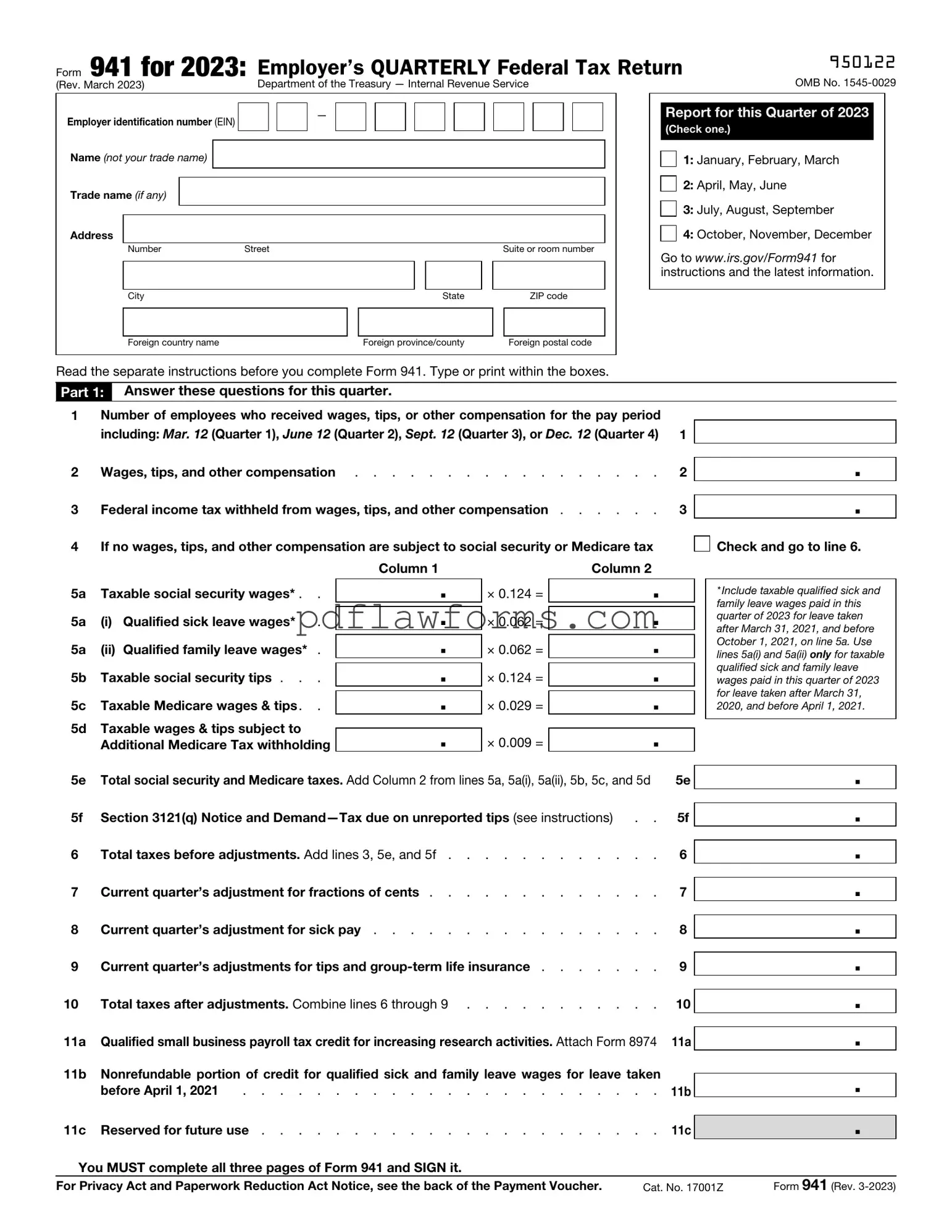The IRS Form 941, also known as the Employer's Quarterly Federal Tax Return, plays a vital role in the landscape of payroll tax reporting for businesses across the United States. This form is essential for employers, as it helps them report the federal income tax withheld from employees’ wages, along with Social Security and Medicare taxes. Every quarter, businesses must file this form to provide the IRS with an overview of their payroll tax obligations, ensuring compliance with federal regulations. Understanding the nuances of Form 941 is crucial for any employer, as it includes sections for reporting adjustments, calculating tax liabilities, and even claiming credits for certain employment-related expenses. Missing a deadline or misreporting can lead to penalties, making it imperative for businesses to grasp the intricacies of this form. As you delve into the details of Form 941, you’ll uncover the significance of accurate reporting and the impact it has on both your business operations and your employees’ financial well-being.
